Chocolate-Making Process
The chocolate-making process is a fascinating journey that transforms the humble cocoa bean into the rich, indulgent treat known as chocolate. This journey involves several key steps: harvesting, fermenting, drying, roasting, grinding, and refining. Each stage plays a vital role in developing the flavor and texture that make chocolate one of the world's most beloved foods.
Harvesting
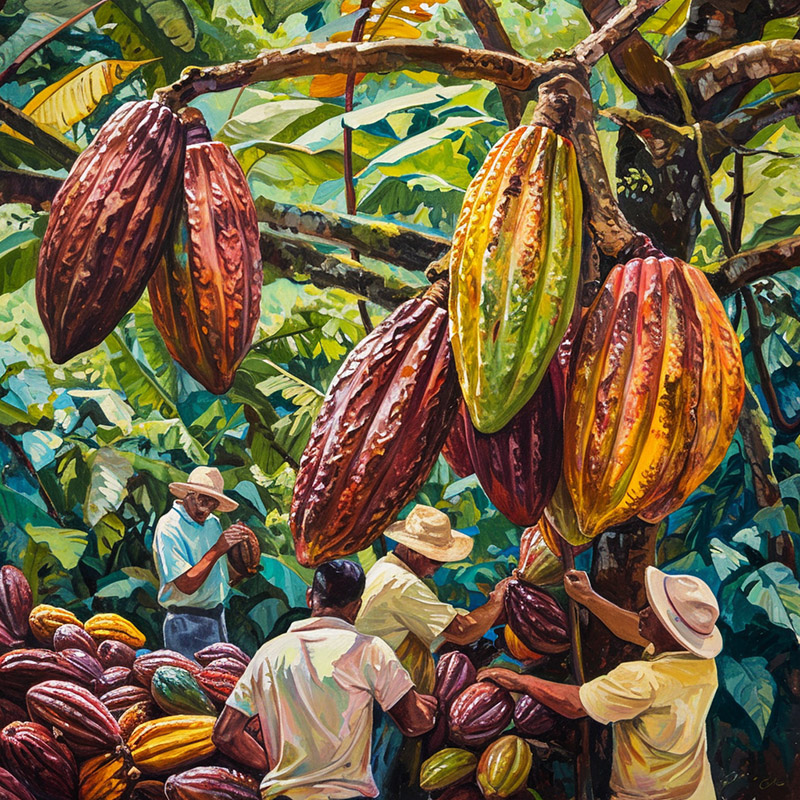
The process begins in the tropical regions around the equator, where cacao trees grow. The pods of these trees contain cocoa beans, surrounded by a sweet, pulpy fruit. Harvesting is often done by hand, with workers using machetes to cut the ripe pods from the trees. Each pod contains 20 to 50 beans, encased in a sticky, sweet pulp.
Fermenting
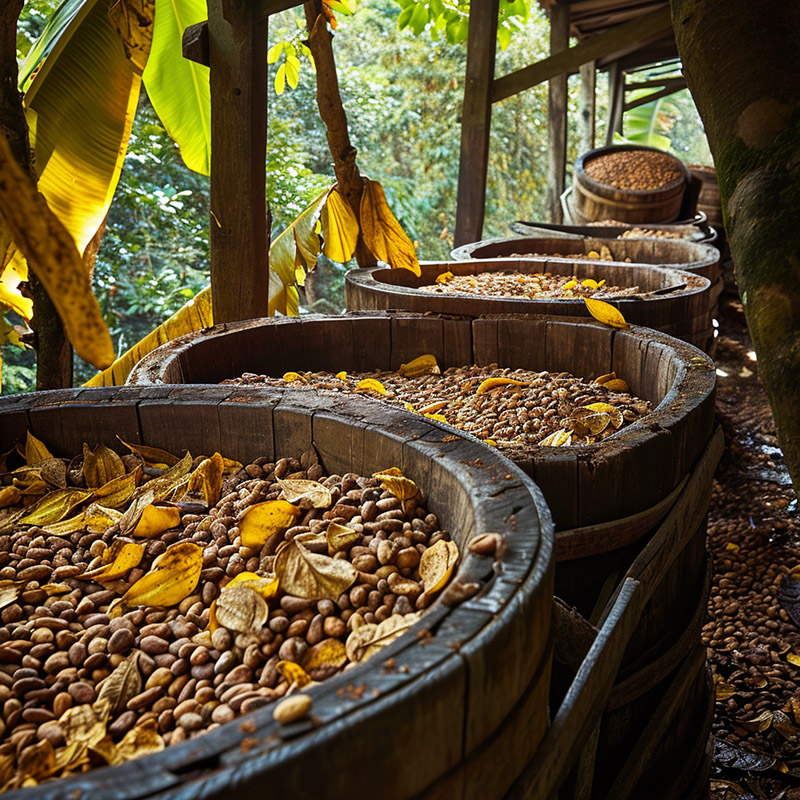
Once harvested, the cocoa beans undergo fermentation, a crucial step that significantly influences the flavor of the chocolate. During fermentation, the beans and pulp are left in heaps, baskets, or bins for several days. Natural fermentation occurs as the pulp’s sugars are converted into alcohol and then into acetic acid. This process generates heat and causes the beans to develop their rich, complex flavor profile.
Drying
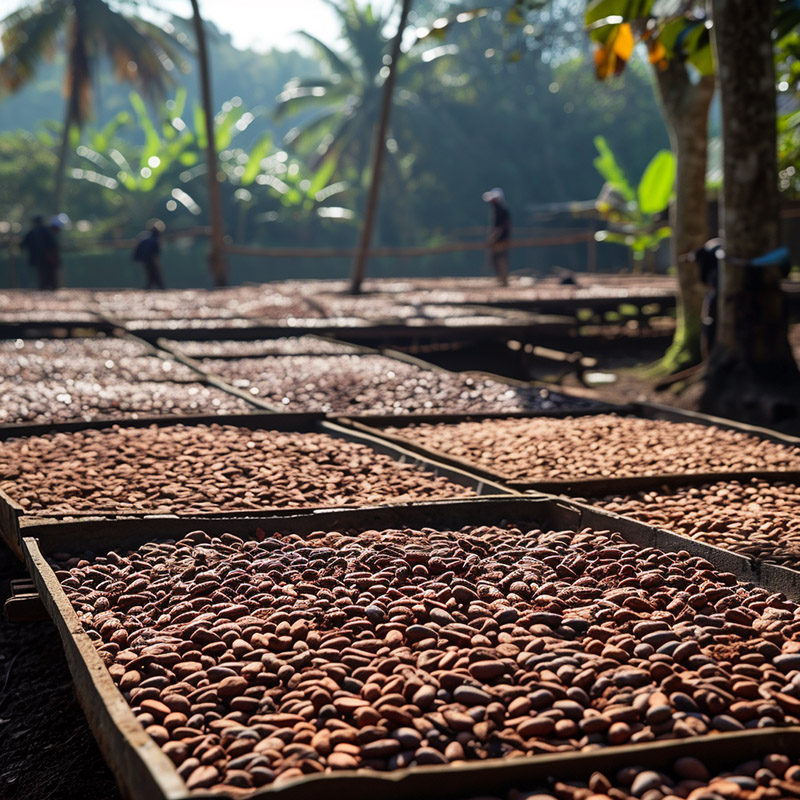
After fermentation, the beans are spread out in the sun to dry. This reduces their moisture content from about 60% to under 7%. Drying must be done carefully to prevent mold and to ensure that the beans do not over-ferment, which can spoil their flavor. Once dried, the beans become shriveled and dark brown.
Roasting
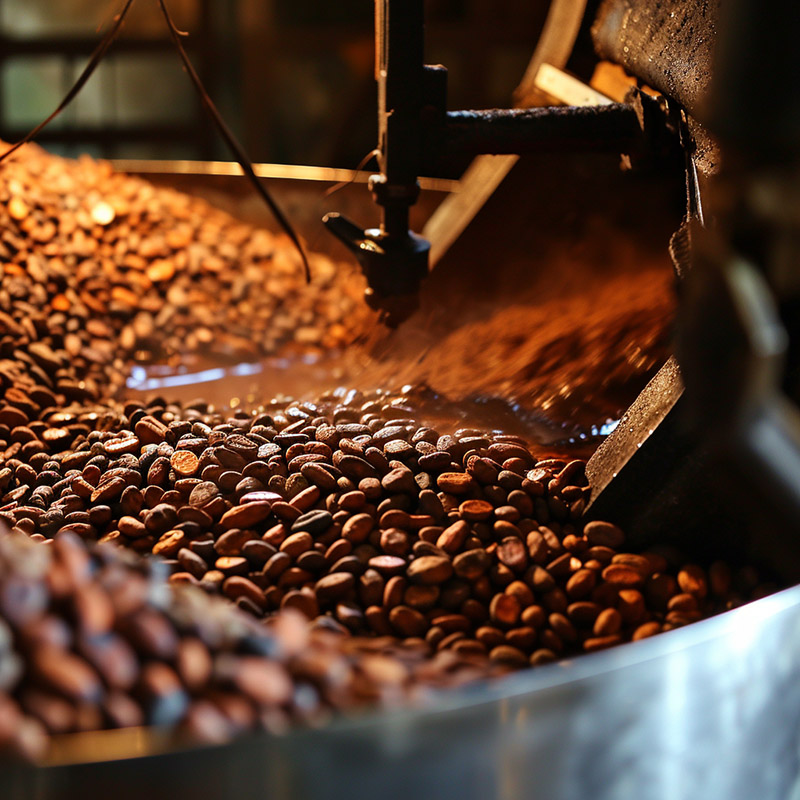
The dried beans are then roasted, a step that further develops their flavor and aroma. The roasting process also makes the beans’ shells easier to remove. The temperature and duration of roasting can vary greatly, affecting the final taste and quality of the chocolate.
Grinding and Refining
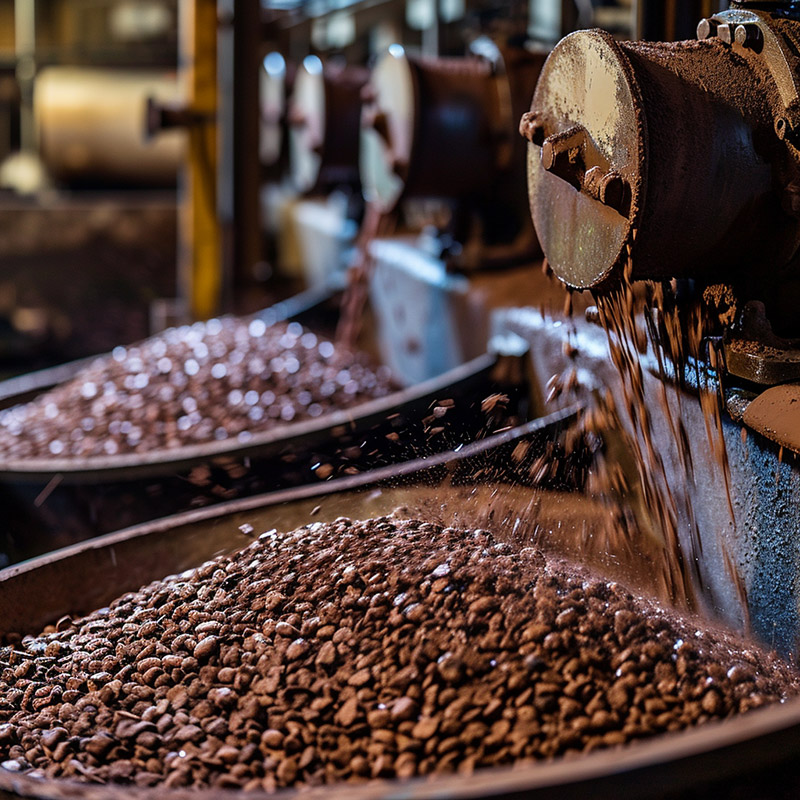
After roasting, the beans are cracked open to extract the nibs (the edible part of the bean). The nibs are then ground into a paste known as chocolate liquor or cocoa mass. This liquor can be further processed into cocoa solids and cocoa butter. The chocolate liquor is mixed with varying amounts of cocoa butter and sugar to produce different types of chocolate. For milk chocolate, milk powder is also added.
Conching and Tempering
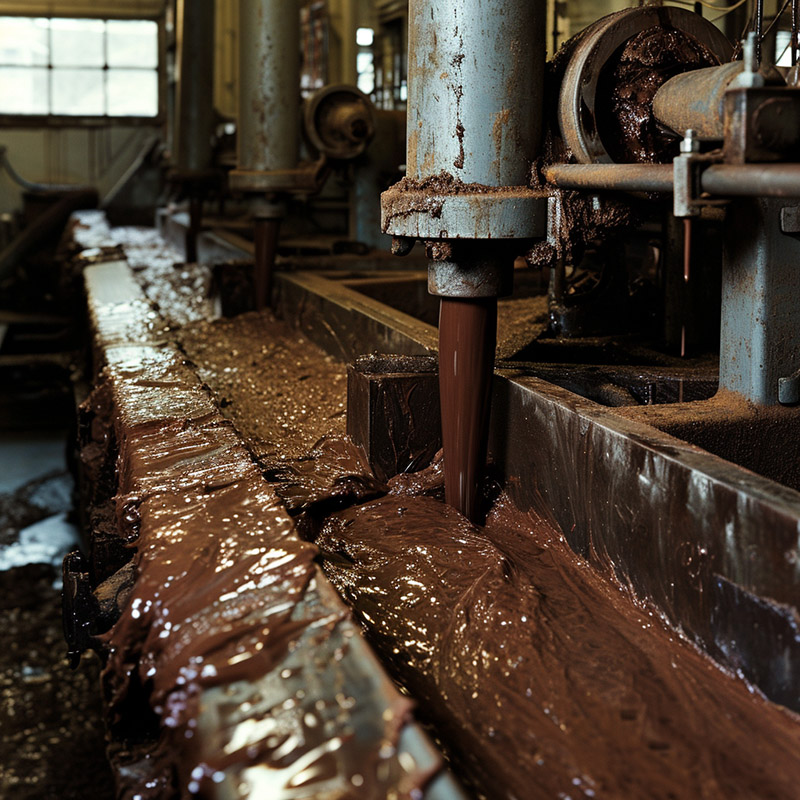
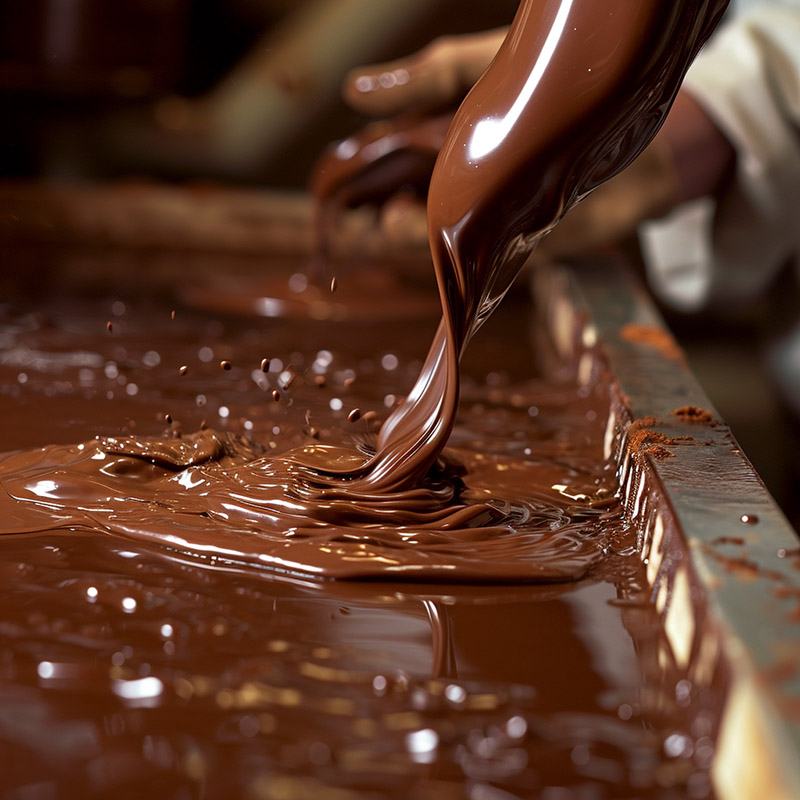
The next stage is conching, where the chocolate is continuously mixed and aerated in a conche (a type of machine). This process can last from a few hours to several days and is crucial for developing the chocolate’s smooth texture and rounding out the flavors. Finally, the chocolate is tempered, a controlled process of heating and cooling, to stabilize the cocoa butter crystals. This gives the chocolate a smooth, glossy finish and a satisfying snap when broken.
Molding and Cooling
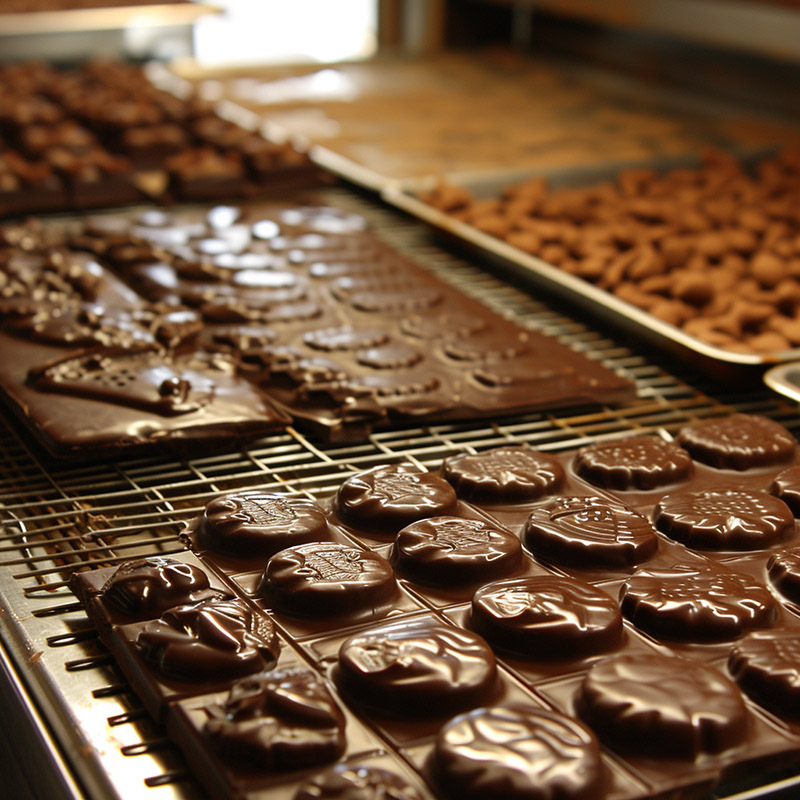
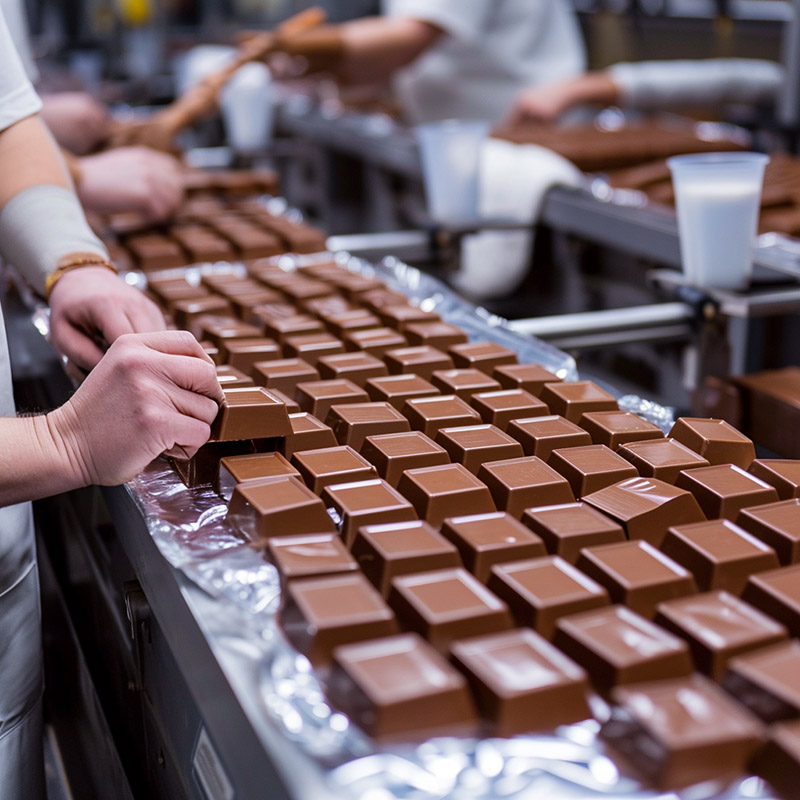
The tempered chocolate is poured into molds to give it the desired shape, such as bars or truffles. It is then cooled to set.
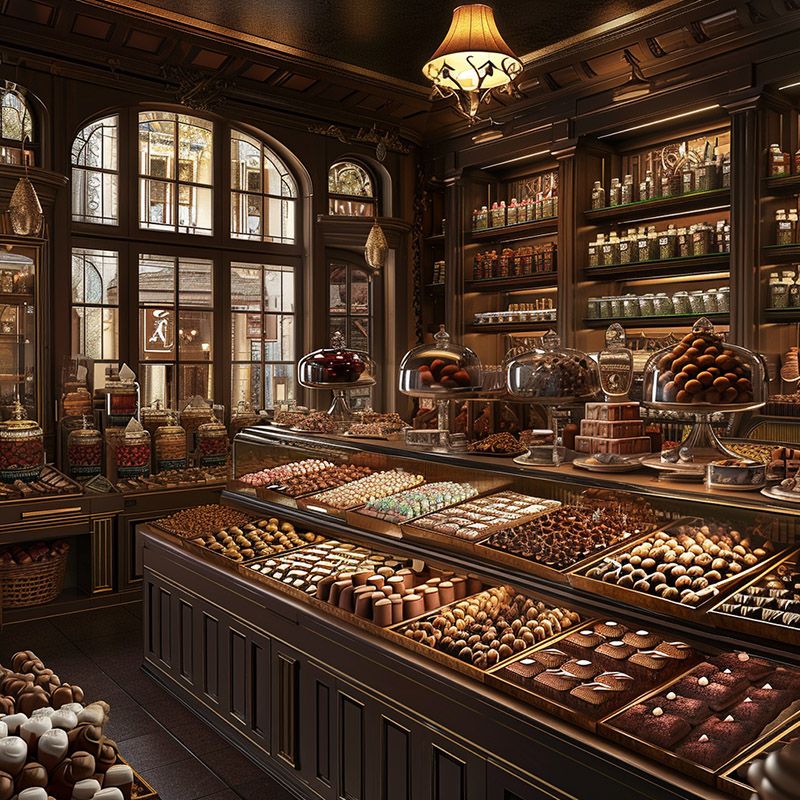
Throughout this process, skilled chocolatiers can adjust various factors, such as the fermentation time, roasting temperature, and conching duration, to create distinct flavors and textures. This artistry is what makes each chocolate unique and allows for a vast array of chocolate varieties, from dark and bitter to creamy and sweet. The final product is a testament to the intricate and delicate journey of the cocoa bean, from the tree to the taste buds.
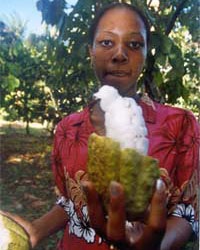
Chocolate Chemistry
The Institute of Food Research served chocolate-coated chemistry at the Science Museum on March 12, 2003.
Concepts such as "polymorphism" and "super-cooling" will be broken down to bite size pieces with the help of the Food of the Gods.
"Chocolate commands attention", says Zoe Dunford at the Institute of Food Research. "It also provides an interesting model to see how molecules stack together to create different forms. Like carbon, which is found in nature as powder, graphite and diamonds, the fat molecules in chocolate can crystallise in a number of different ways. Only one of these forms results in chocolate with the desired snap, gloss, melting point, texture and shrinkage on solidifying".
"Chocolate is a good example of something which people of all ages love, but which has a complex scientific basis to its structure", says Dr Ian Gibson, MP for Norwich North and Chair of the Science and Technology Select Committee. "After liquorice allsorts it is my favourite indulgence -- and it should remain an occasional treat."
Visitors were able to learn about the raw materials of chocolate, including cocoa beans, cocoa nibs and cocoa butter. A cocoa pod from the Caribbean was on display.